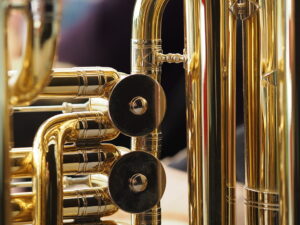Gabrieli, Canzona per Sonare N. 4
 It was just about 200 weekly posts ago that we featured a canzona by Giovanni Gabrieli – 199 posts to be exact. Gabrieli did make a more recent appearance here last year with the more somber Beata es virgo, which served as a launching pad for a discussion on the sackbut. But today’s post is a bit different: a canzona with modern brass.
It was just about 200 weekly posts ago that we featured a canzona by Giovanni Gabrieli – 199 posts to be exact. Gabrieli did make a more recent appearance here last year with the more somber Beata es virgo, which served as a launching pad for a discussion on the sackbut. But today’s post is a bit different: a canzona with modern brass.
In many instances, I would argue in favor of using period instruments. But that’s not a hard and fast rule and, even if it were, the opportunity to play Gabrieli on modern brass instruments would make an excellent exception.
I remember having my interest piqued by Gabrieli when the brass sections of several major American orchestras (New York, Philadelphia, and Chicago, as I recall) released an album highlighting the music’s antiphonal effects. I was in an Army band in Germany at the time, and we were spending all of our spare cash (well, maybe not quite all of it) on high-end stereo equipment to ship back to the states. That album was perfect for testing out our equipment.
A canzona is an instrumental piece, usually with a lively rhythm and distinct sections, and it is especially associated with Gabrieli and Frescobaldi. (Hmm, we don’t have Frescobaldi on these pages yet.)
This canzona is played by five instruments but is written for four parts: Canzon quarta a quatro. If you compare the original score to the performance, you will see that this arrangement has the trumpets taking turns on the top voice (soprano) at times. At other times the tuba and trombone double each other on the lowest voice, lending more weight to the bass part, while the trumpets take the top two voices (soprano and alto) and the horn moves down to the tenor. And in the final cadence, the tuba takes the eighth-note passage in the tenor voice leaving the trombone on the sustained bass note. It’s an equitable division by the arranger that makes good use of the different sonorities of the instruments.



